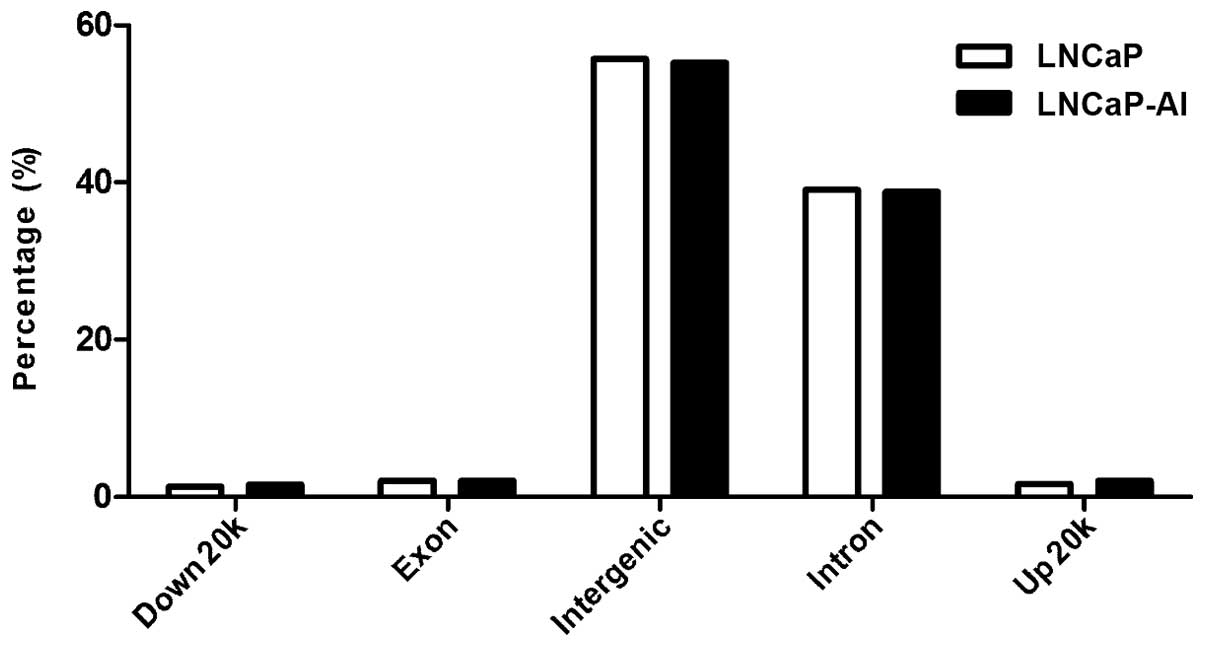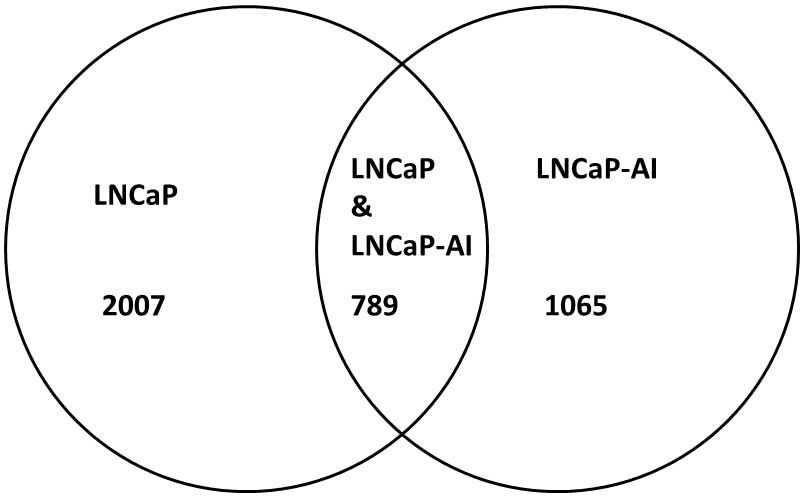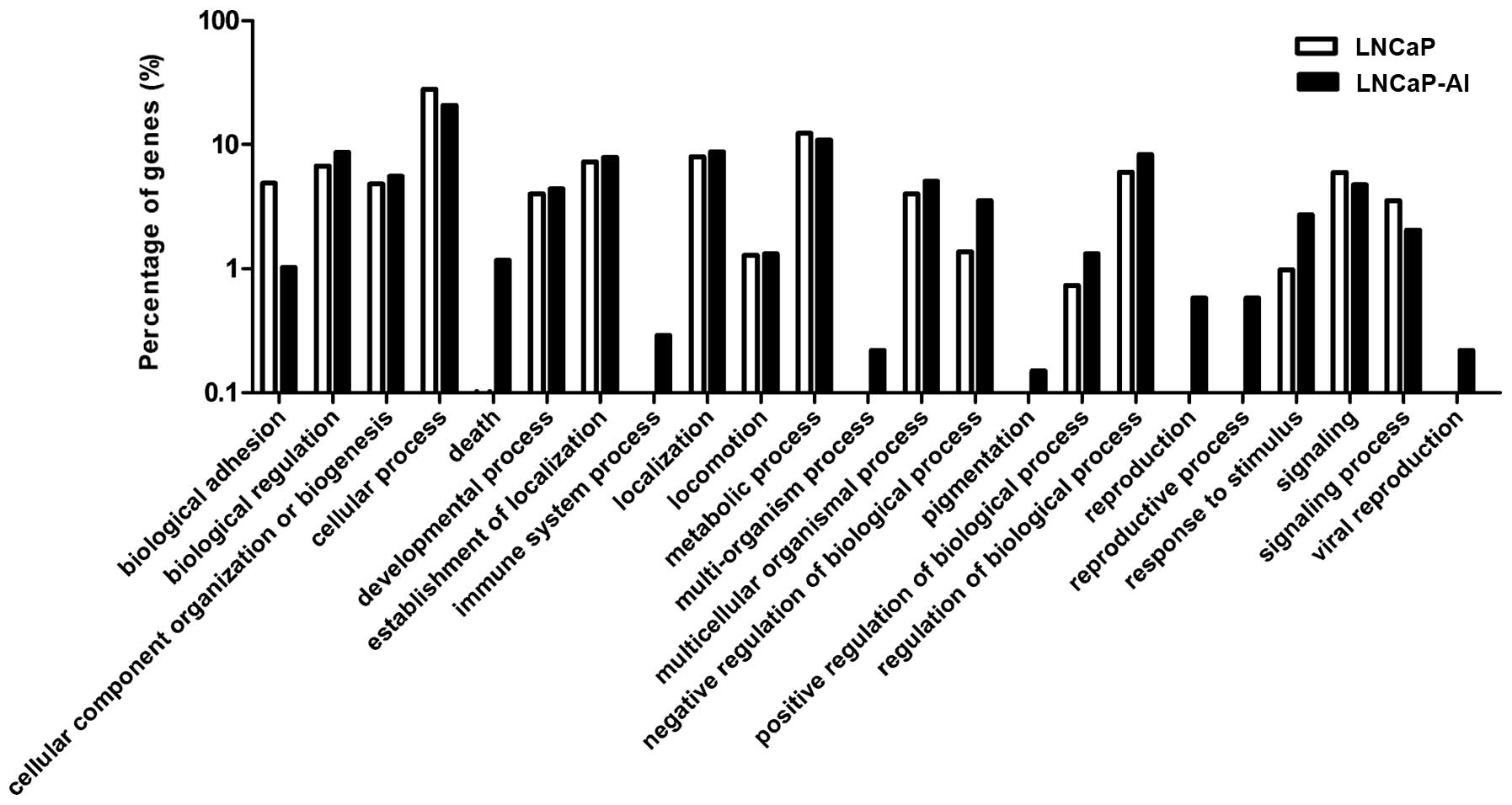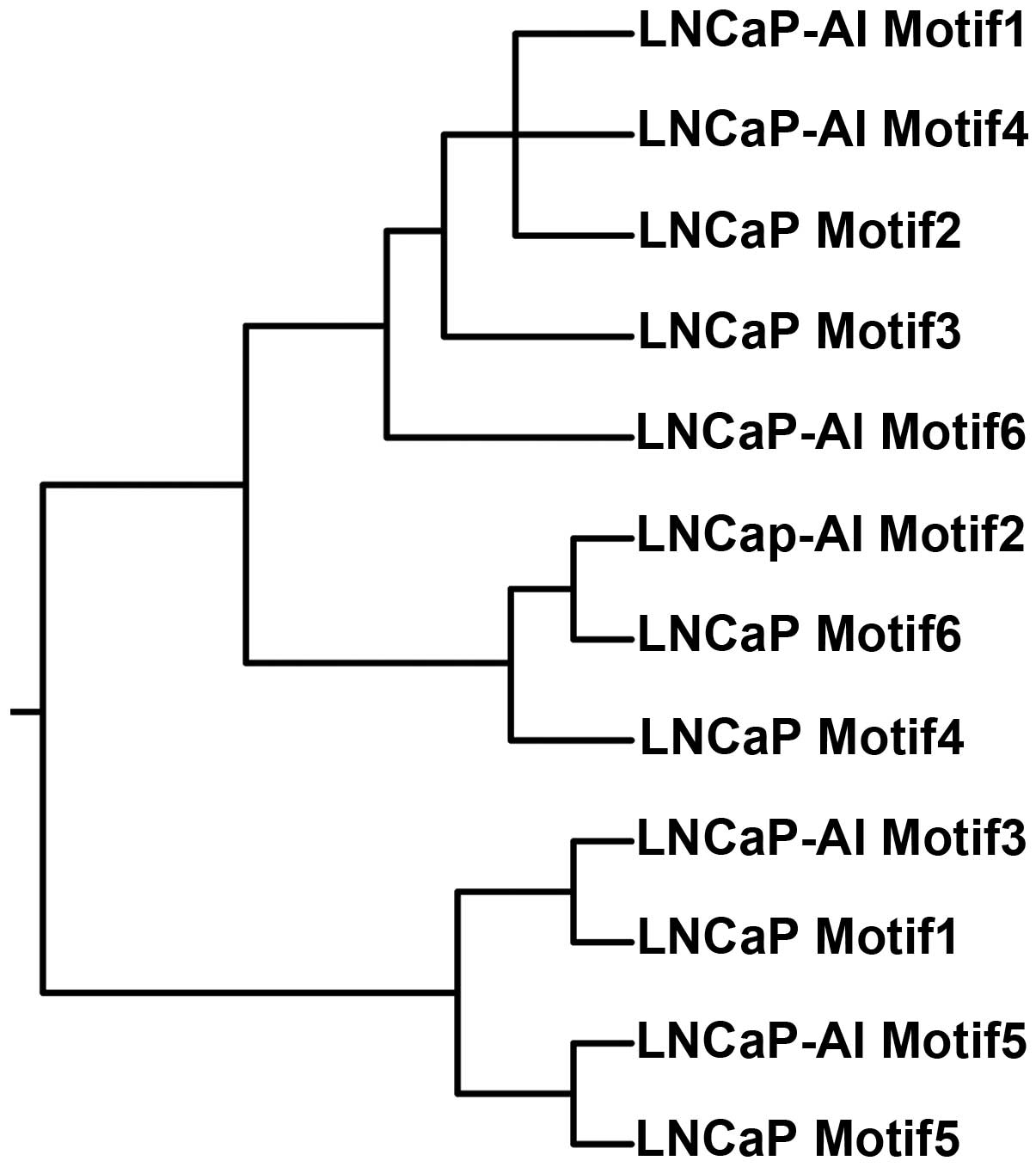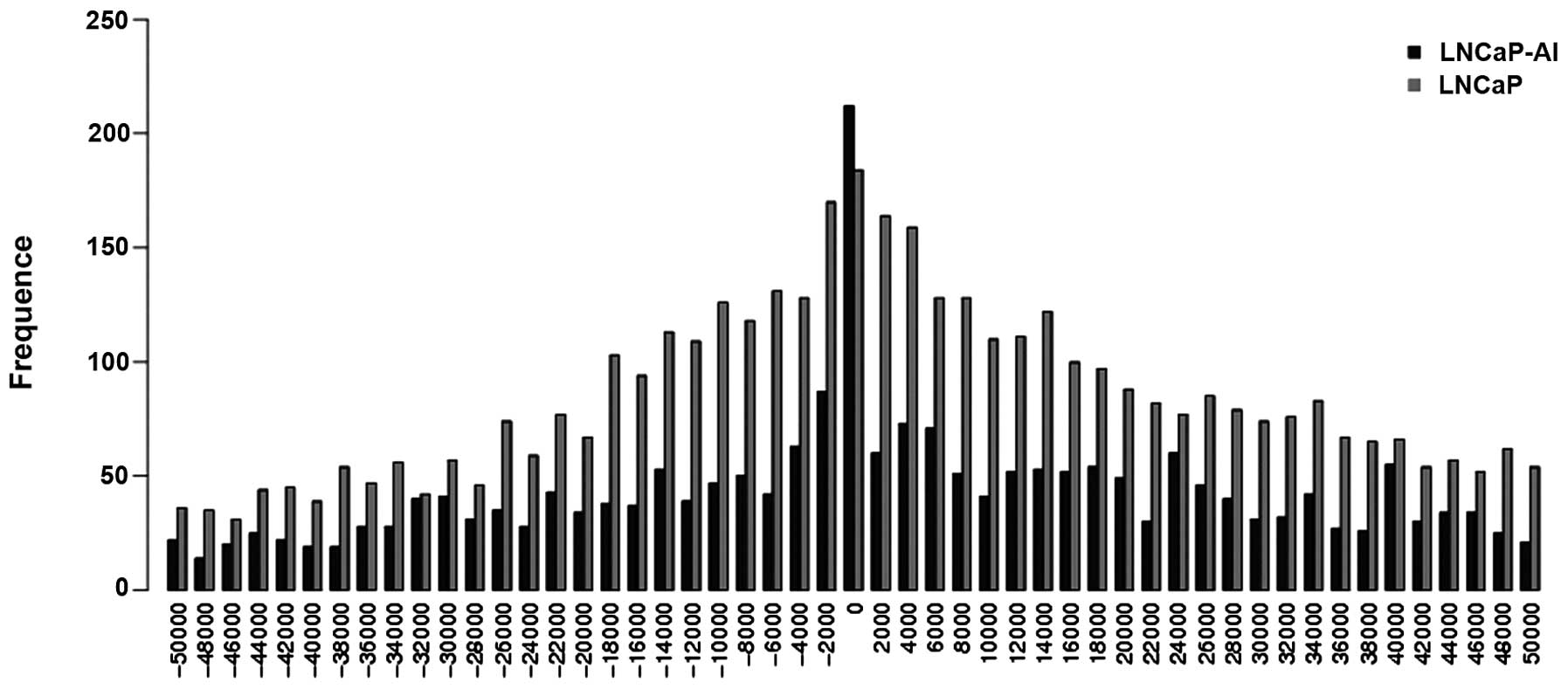|
1
|
Suzuki H, Ueda T, Ichikawa T and Ito H:
Androgen receptor involvement in the progression of prostate
cancer. Endocr Relat Cancer. 10:209–216. 2003. View Article : Google Scholar : PubMed/NCBI
|
|
2
|
Debes JD and Tindall DJ: Mechanisms of
androgen-refractory prostate cancer. N Engl J Med. 351:1488–1490.
2004. View Article : Google Scholar : PubMed/NCBI
|
|
3
|
Scher HI, Liebertz C, Kelly WK, et al:
Bicalutamide for advanced prostate cancer: the natural versus
treated history of disease. J Clin Oncol. 15:2928–2938.
1997.PubMed/NCBI
|
|
4
|
Chen CD, Welsbie DS, Tran C, et al:
Molecular determinants of resistance to antiandrogen therapy. Nat
Med. 10:33–39. 2004. View
Article : Google Scholar : PubMed/NCBI
|
|
5
|
Hu R, Dunn TA, Wei S, et al:
Ligand-independent androgen receptor variants derived from splicing
of cryptic exons signify hormone-refractory prostate cancer. Cancer
Res. 69:16–22. 2009. View Article : Google Scholar : PubMed/NCBI
|
|
6
|
Zeng R, Liu Z, Sun Y and Xu C:
Differential expression and function of AR isoforms in prostate
cancer. Oncol Rep. 27:492–498. 2012.PubMed/NCBI
|
|
7
|
Carver BS, Chapinski C, Wongvipat J, et
al: Reciprocal feedback regulation of PI3K and androgen receptor
signaling in PTEN-deficient prostate cancer. Cancer Cell.
19:575–586. 2011. View Article : Google Scholar : PubMed/NCBI
|
|
8
|
Richter E, Srivastava S and Dobi A:
Androgen receptor and prostate cancer. Prostate Cancer Prostatic
Dis. 10:114–118. 2007. View Article : Google Scholar : PubMed/NCBI
|
|
9
|
Wang Q, Li W, Zhang Y, et al: Androgen
receptor regulates a distinct transcription program in
androgen-independent prostate cancer. Cell. 138:245–256. 2009.
View Article : Google Scholar : PubMed/NCBI
|
|
10
|
Wang Q, Li W, Liu XS, et al: A
hierarchical network of transcription factors governs androgen
receptor-dependent prostate cancer growth. Mol Cell. 27:380–392.
2007. View Article : Google Scholar : PubMed/NCBI
|
|
11
|
Yu J, Yu J, Mani RS, et al: An integrated
network of androgen receptor, polycomb, and TMPRSS2-ERG gene
fusions in prostate cancer progression. Cancer Cell. 17:443–454.
2010. View Article : Google Scholar : PubMed/NCBI
|
|
12
|
Jia L, Berman BP, Jariwala U, et al:
Genomic androgen receptor-occupied regions with different
functions, defined by histone acetylation, coregulators and
transcriptional capacity. PLoS One. 3:e36452008. View Article : Google Scholar : PubMed/NCBI
|
|
13
|
Xu G, Wu J, Zhou L, et al:
Characterization of the small RNA transcriptomes of androgen
dependent and independent prostate cancer cell line by deep
sequencing. PLoS One. 5:e155192010. View Article : Google Scholar : PubMed/NCBI
|
|
14
|
Tewari AK, Yardimci GG, Shibata Y, et al:
Chromatin accessibility reveals insights into androgen receptor
activation and transcriptional specificity. Genome Biol.
13:R882012. View Article : Google Scholar : PubMed/NCBI
|
|
15
|
Zhang Y, Liu T, Meyer CA, et al:
Model-based analysis of ChIP-Seq (MACS). Genome Biol. 9:R1372008.
View Article : Google Scholar : PubMed/NCBI
|
|
16
|
Bailey TL and Elkan C: Fitting a mixture
model by expectation maximization to discover motifs in
biopolymers. Proc Int Conf Intell Syst Mol Biol. 2:28–36.
1994.PubMed/NCBI
|
|
17
|
Ma W, Noble WS and Bailey TL: Motif-based
analysis of large nucleotide data sets using MEME-ChIP. Nat Protoc.
9:1428–1450. 2014. View Article : Google Scholar : PubMed/NCBI
|
|
18
|
Ashburner M, Ball CA, Blake JA, et al: The
Gene Ontology Consortium: Gene ontology: tool for the unification
of biology. Nat Genet. 25:25–29. 2000. View
Article : Google Scholar : PubMed/NCBI
|
|
19
|
Tomlins SA, Mehra R, Rhodes DR, et al:
Integrative molecular concept modeling of prostate cancer
progression. Nat Genet. 39:41–51. 2007. View Article : Google Scholar : PubMed/NCBI
|
|
20
|
Vander Griend DJ, D'Antonio J, Gurel B,
Antony L, Demarzo AM and Isaacs JT: Cell-autonomous intracellular
androgen receptor signaling drives the growth of human prostate
cancer initiating cells. Prostate. 70:90–99. 2010. View Article : Google Scholar : PubMed/NCBI
|
|
21
|
Kokontis JM, Hsu S, Chuu CP, Dang M,
Fukuchi J, Hiipakka RA and Liao S: Role of androgen receptor in the
progression of human prostate tumor cells to androgen independence
and insensitivity. Prostate. 65:287–298. 2005. View Article : Google Scholar : PubMed/NCBI
|
|
22
|
Attard G, Richards J and de Bono JS: New
strategies in metastatic prostate cancer: Targeting the androgen
receptor signaling pathway. Clin Cancer Res. 17:1649–1657. 2011.
View Article : Google Scholar : PubMed/NCBI
|
|
23
|
Lupien M, Eeckhoute J, Meyer CA, et al:
FoxA1 translates epigenetic signatures into enhancer-driven
lineage-specific transcription. Cell. 132:958–970. 2008. View Article : Google Scholar : PubMed/NCBI
|
|
24
|
Zinzen RP, Girardot C, Gagneur J, Braun M
and Furlong EE: Combinatorial binding predicts spatio-temporal
cis-regulatory activity. Nature. 462:65–70. 2009. View Article : Google Scholar : PubMed/NCBI
|
|
25
|
Liu T, Gao H, Yang M, Zhao T, Liu Y and
Lou G: Correlation of TNFAIP8 overexpression with the
proliferation, metastasis, and disease-free survival in endometrial
cancer. Tumour Biol. 35:5805–5814. 2014. View Article : Google Scholar : PubMed/NCBI
|
|
26
|
Liu T, Xia B, Lu Y, Xu Y and Lou G:
TNFAIP8 overexpression is associated with platinum resistance in
epithelial ovarian cancers with optimal cytoreduction. Hum Pathol.
45:1251–1257. 2014. View Article : Google Scholar : PubMed/NCBI
|
|
27
|
Zhang C, Kallakury BV, Ross JS, et al: The
significance of TNFAIP8 in prostate cancer response to radiation
and docetaxel and disease recurrence. Int J Cancer. 133:31–42.
2013. View Article : Google Scholar : PubMed/NCBI
|
|
28
|
Chase D, McLauchlan G, Eckersall PD,
Pratschke J, Parkin T and Pratschke K: Acute phase protein levels
in dogs with mast cell tumours and sarcomas. Vet Rec. 170:6482012.
View Article : Google Scholar : PubMed/NCBI
|
|
29
|
Papadia C, Louwagie J, Del Rio P, et al:
FOXE1 and SYNE1 genes hypermethylation panel as promising biomarker
in colitis-associated colorectal neoplasia. Inflamm Bowel Dis.
20:271–277. 2014. View Article : Google Scholar : PubMed/NCBI
|
|
30
|
Shi S, Zhou B, Wang Y, et al: Genetic
variation in RTN4 3′-UTR and susceptibility to cervical squamous
cell carcinoma. DNA Cell Biol. 31:1088–1094. 2012. View Article : Google Scholar : PubMed/NCBI
|



